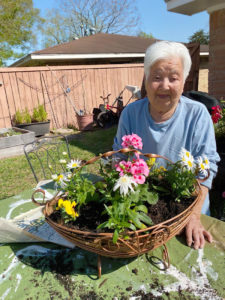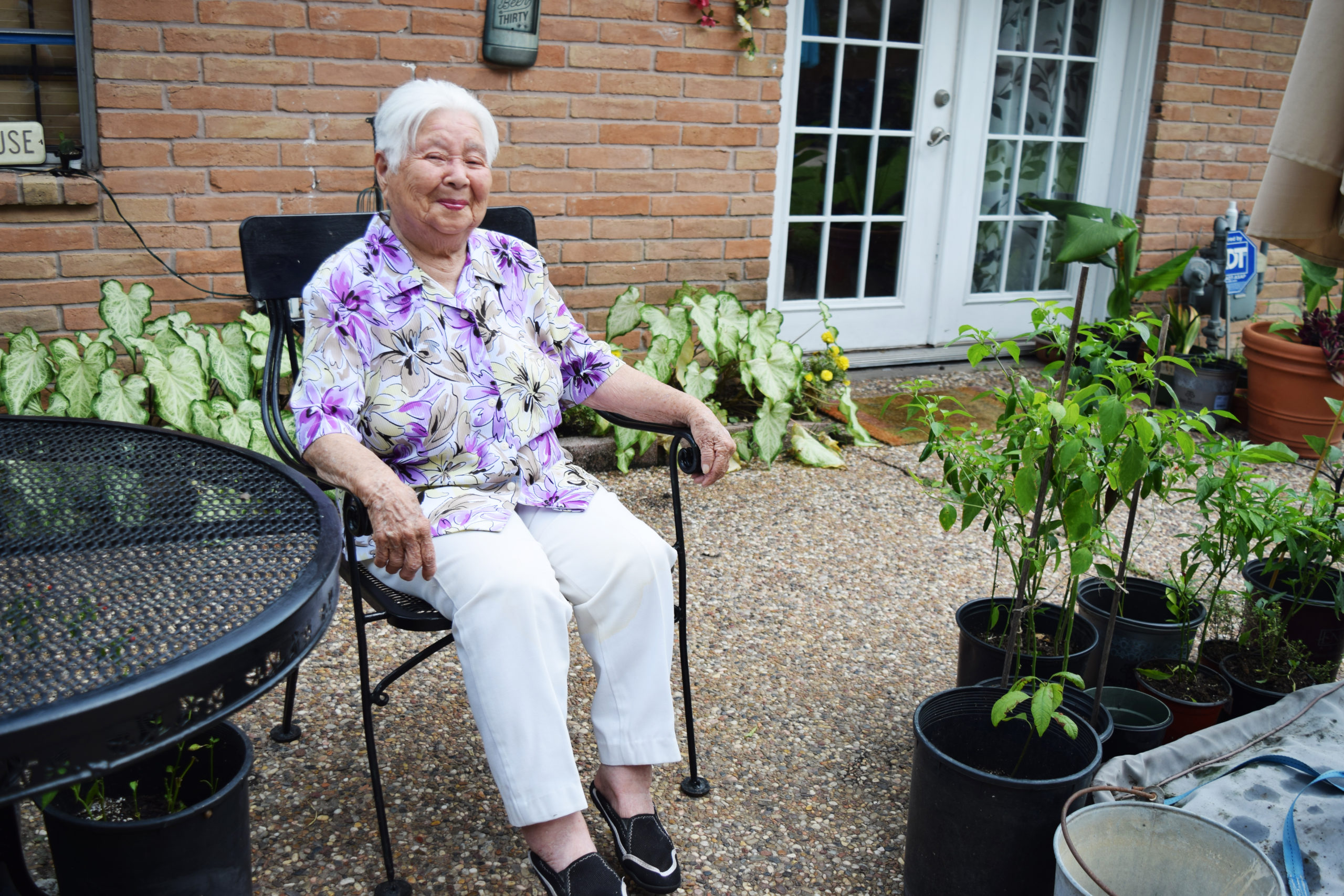by Aiko Anderson
Houston
I will never forget the first person I introduced to Buddhism. A woman invited my friends and me in for tea and then, upon hearing the word “Gohonzon,” excused herself to the kitchen, let herself out a side door and ran hard from us down a dirt road.
Wearing my winningest smile, I chased her down, barefoot, calling, “Wait! I’m so happy to speak with you! Don’t run away!”
This was a few months into my Buddhist practice in 1950s Japan, a country distrustful—even fearful—of a fast-growing, people-centered religious movement. Back then, you had to have a lot of energy to break through to people’s hearts.
I was born into a well to-do family and enjoyed good health. I felt I had everything. I wasn’t interested in spiritual stuff. What interested me was work. I kept busy. Busy, busy! I kept working even during the horrible war years of my early 20s, the memories of which scare me even today—fires; air raid sirens and the B-29s; boats exploding; everyone running. Though I worked and worked, my life was asleep.

Daimoku, chanting Nam-myoho-renge-kyo, woke me up. Actually, daimoku and hot oil. For years, my niece invited me over for dinner followed by a casual, second invitation to chant. I came for the food. But one night, eating fresh tempura, hot oil spattered my arm and face. I felt like I’d been slapped. My good health, my easy life—it could all change in an instant! That night, in front of the Gohonzon with my niece’s family, I felt the chanting opening my life to questions that war had not: “What is true happiness?” and “What is the best way to live?”
A new, joyful Aiko was waking up. She was saying OK! to chanting, OK! to studying and OK! to doing Soka Gakkai activities. This Aiko rolled up her sleeves for a new kind of work—refreshing, joyful work for the peace of the land.
“Before we share Buddhism,” my women’s leader would say, “we chant a lot of daimoku!”
Wherever she went, I went, too, pedaling all over my hometown of Shiogama, day in and day out, rain or shine, on bad dirt roads that chucked me in their ditches. I would just brush myself off and keep going. I went anywhere, any time to support the members and share Buddhism, and felt the joy of fighting for kosen-rufu.
All this taught me many lessons, treasures I took with me to America when, in my 40s, I married a Texan. I sensed it was my mission to do kosen-rufu in America.
But Texas, I realized, is no Shiogama. Just driving home from the airport, I couldn’t help but wonder how I’d contribute to kosen-rufu in a place of its size. What I did was get a car and drive and drive—all over the state, together with my comrades in faith as emissaries of Ikeda Sensei. Today, Texas doesn’t seem so big to me. It’s small. I stopped driving last year, at age 99, accident-free.
At 100 years old, I remain youthful. [A friend] wants to know my secret, which is, I will tell you, running top speed for kosen-rufu.
But not driving hasn’t kept me from sharing Buddhism. Just the other day, a friend came by to help me in the yard. She took one look at my garden and gasped.
“It’s growing!” she exclaimed. Houston had been experiencing extremely hot weather, and her own garden languished. I grow squashes, cucumbers, tomatoes and carrots. My garden is very colorful.
“It must be your chanting,” she said and started poking through my pile of Living Buddhism. I rejoiced—like me, my garden can’t help but share Buddhism. At 100 years old, I remain youthful. She wants to know my secret, which is, I will tell you, running top speed for kosen-rufu.
Speaking of which, remember the woman who ran away? Her suffering was so great. Actually, her husband had run away from her! Again and again I went to her, respecting her as a Buddha. My sincerity opened her heart and, after three years, she accepted faith and received great benefit.
My joy was incredible. I have been running ever since.
Q: What advice would you give to newer practitioners?
Aiko Anderson: I recommend that you don’t go it alone. Find a friend in faith and stick together, chant together. Run a hard, three-legged race for kosen-rufu.
You are reading {{ meterCount }} of {{ meterMax }} free premium articles

